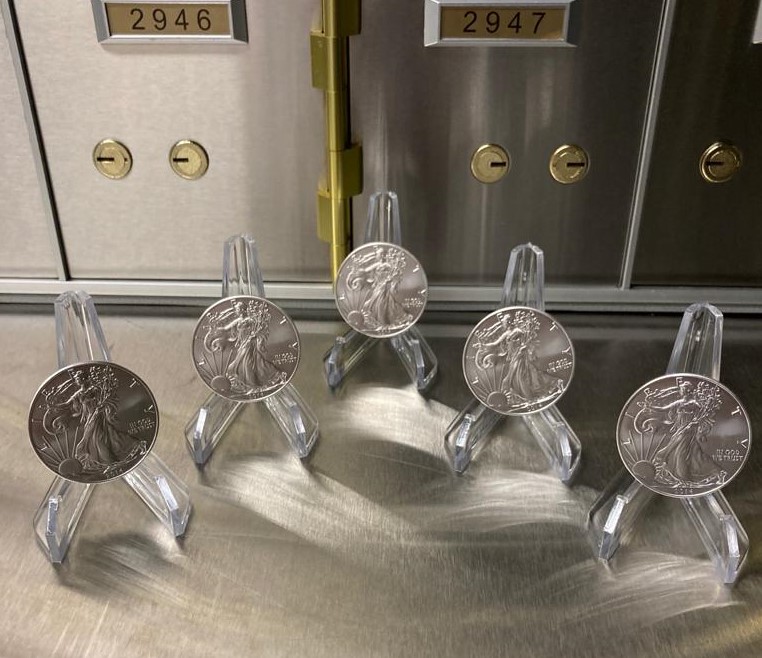The driving forces behind the recent rally in Precious Metals
Precious metals have seen a tremendous run up in price over the past few weeks. For example, gold’s price in early February was just over $1,800 and by the 8th March the price rallied to $2,049 per ounce. Gold investors were delighted to see the value of their holdings skyrocket over 14% throughout the course of those five weeks. This panic peak in price was just a few dollars below the 2020 record high in USD terms. The run up in price was a direct result of investors making a beeline for the traditional safe-haven metal on mounting fears around the Russia-Ukraine crisis. Gold wasn’t the only metal that saw impressive gains, as the price of Platinum and Palladium also rose to highs of $1,182 and $3,324. These metals were helped by a supply shortfall due to sanctions on Russia, the top producer of the auto-catalyst metals.
The commodity markets have been rather wild lately as multiple influencing factors have caused an increase in volatility. The phenomenal surge across key commodities has been caused mainly by the so far fruitless peace talks between Russia and Ukraine. In fact, matters appear to be escalating with Russia recently warning that the use of nuclear weapons is a possibility. Other factors such as the first of several US rate hikes, intensifying inflation concerns and the Chinese central bank confirming its intention of easing monetary policy among China’s covid woes have all been adding to the risk-off mood.
Soaring oil prices and the Ukraine war have slammed appetite for riskier assets. Russia is one of the biggest suppliers of raw materials to the global economy and with sanctions mounting against Russia, this causes a major disruption to the supply lines of not only metals but also energy and crops.
China’s covid woes are also adding to the risk-off mood. China is struggling with its worst COVID-19 surge since the start of the pandemic. These fears of an escalation in the Ukraine-Russia crisis and China’s Covid resurgence are definitely challenging the XAU/USD bears. Additionally, US President Joe Biden also cited fears of a cyberattack against the US which adds to the already heightened levels of fear and uncertainty.
The recent strength of the gold price is also largely attributable to the sharp increase seen in WTI crude oil prices, which is driving inflation expectations higher. Oil prices are likely to have an outsized impact on inflation expectations and in turn gold impact the demand for gold in the process. As crude prices soar, so too does the expectations of higher inflation, gold investors would be wise to keep a close eye on this and the overall developments in Ukraine. Oil prices are currently acting as a useful gauge for the geopolitical risks right now.
In other news, the Federal Reserve began its long-awaited rate hiking cycle, with its first-rate hike since 2018. This was the “hottest” the Fed allowed inflation and unemployment to run before commencing a “lift off” in rates. The current highs in inflation and lows in unemployment have raised concerns about the Fed’s stance on monetary policy. However, the Fed appears to be keen to address those fears as their stance turns more hawkish.
The average number of predicted rate hikes this year rose to seven, up from four in December. This implies one 25bp hike at every remaining meeting this year. Seven members were even more hawkish than this, pointing to the possibility of a 50-basis point increase. However, as the interplay of geopolitics, inflation and economic growth are uncertain, investors should be aware that the pace and frequency of these rate hikes are far from set in stone. The pace and frequency of these rate increases matter because as interest rates rise so to does the opportunity cost of holding a non-yielding asset such as gold.
All in all, the supposed bullish scenario for gold would be that inflation continues to run hot and that the Russia-Ukraine crisis will continue to support higher precious metal prices due to a potential short-term safe-haven bid. If the tension continues it would be reasonable to expect inflation to remain persistently high as global growth slows, thereby eventually forcing central banks to abandon further rate hikes and instead revert to a period of renewed stimulus.
We have seen gold perform strongly particularly against the S&P 500 and the MSCI World index even despite the headwinds from rising real yields. We have seen a significant amount of safe haven bids in the gold market as equity markets have come under pressure due to major concerns on the geopolitical front which in turn shows the importance and benefits of holding gold in your portfolio. We see a key support at $1890/oz with a break above $1957 needed to signal fresh upside potential.
On an optimistic note, we heard that United Overseas Bank Head of Markets Strategy, Heng Koon How, sees strong safe haven inflows into gold and they have lifted their price target to $2,200/oz by the end of this year. Only time will tell whether this price target will be reached and how the ongoing concerns and geopolitical turmoil will play out. One thing is for sure, owning physical precious metals as part of a well-balanced investment portfolio could prove to be very important.

